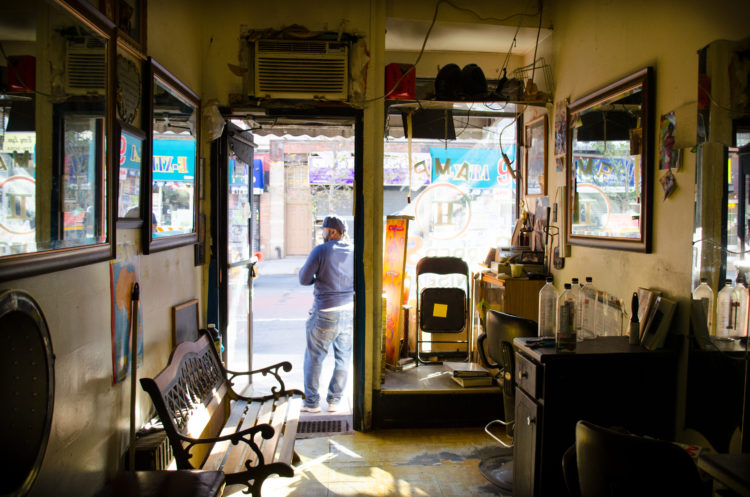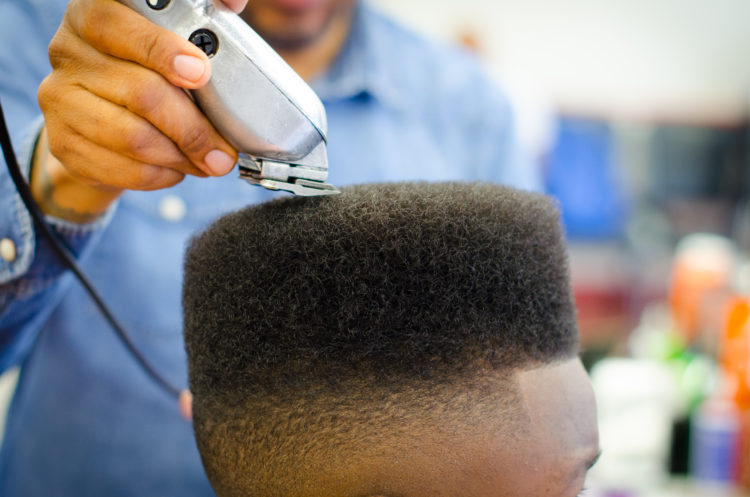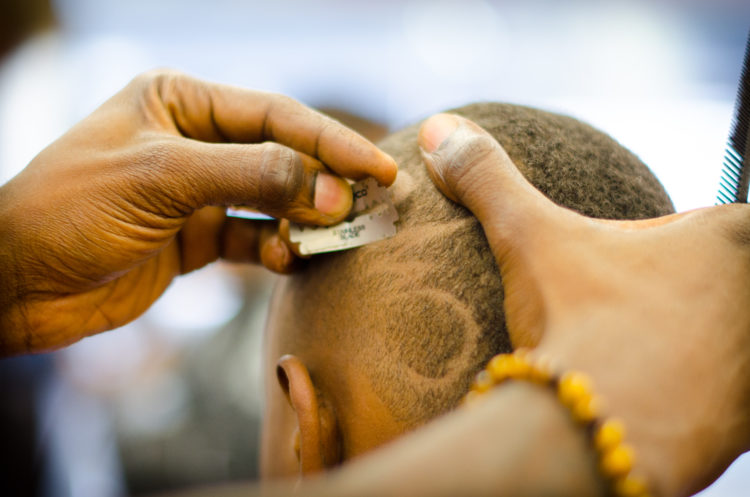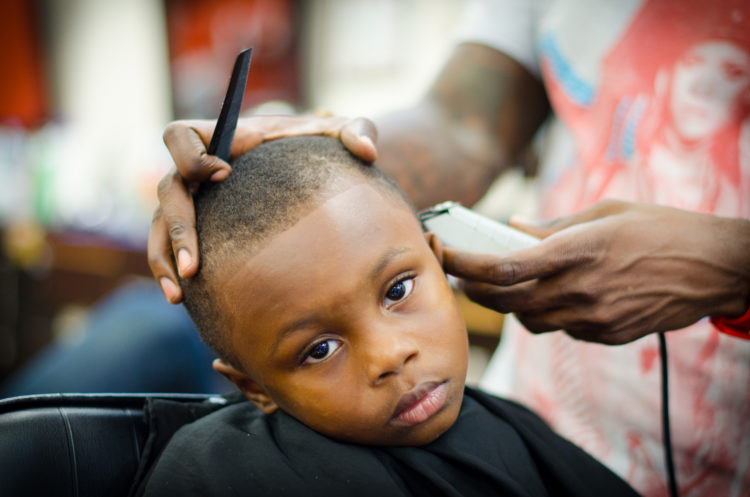Hidemi Takagi and KODA are currently running a Kickstarter campaign to publish an exhibition catalog, called Hidemi Takagi: Stories. The catalog will feature three community-based photography projects developed in Brooklyn by the artist. It includes The Barbershops series, for which the photographer documented barbershops as neighborhood institutions that are central to public life in Bedford-Stuyvesant and Crown Heights. The link to the project is in this link.
Why did you choose to focus on Bedford-Stuyvesant and Crown Heights for The Barbershops series?
I live in Bedford-Stuyvesant, near the border of Crown Heights in Brooklyn. These are two historically Black/Caribbean neighborhoods. I’m Japanese and my husband is Haitian. He was born in Haiti, grew up in Brooklyn, and we have a biracial daughter. Therefore, Black/Caribbean culture also plays a significant role in my personal life.
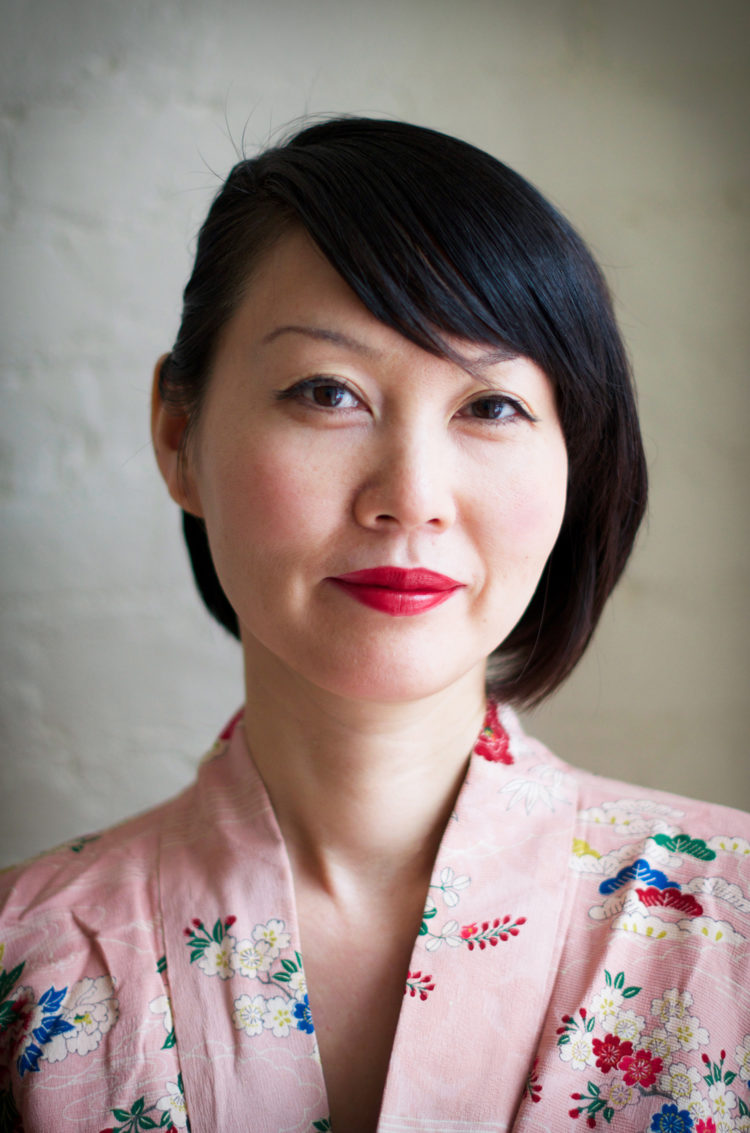
Many businesses are hugely influenced by those cultures in my neighborhood. Especially the beauty hair salons, nail salons, and barbershops seem more visible than other businesses. But over the years, the area has been under threat from gentrification and real estate development; many of the local businesses are disappearing day by day. So I wanted to document the history of this neighborhood.
I was very curious about barbershop culture, specifically. That’s one of those iconic images that I love in this neighborhood. My idea about a barbershop was more of a social club, a place to debate politics, social issues, sports and family; not only getting a haircut. Barbershops seems very homely and inviting, where young and old all go to this communication center to catch up and learn, it’s a cool hangout spot for men. It was the one mysterious and untouchable place for me since I am an Asian woman. I needed to investigate inside and wanted to share that positive vibe with the audience.
What is it about Black people’s relationship to their hair that you found appealing?
For me, it’s hard to talk about Black people’s relationship to their hair, given that I come from a country where pretty much everyone has the same type of hair (dark straight hair). Matter of fact, I admired Black B-girls’ fashion and hair styles when I was listening to hip hop at a young age. (Today I would be called 100% cultural appropriator.)
Now I have a biracial daughter who has curly hair. From my point of view, she has the most beautiful hair, hair that I always wanted to have. The most difficult part about being a Japanese mom to a Black child is taking care of her hair. When we go to my husband’s family place in Miami, any girl from his family can braid her hair. And in fact, not only his family, pretty much every girl from the culture can do so. Even my husband does so much better than me. My daughter’s hair and scalp get dry and tangled when she doesn’t wash her hair for a few days, and so it’s hard to comb her. (For Japanese hair, if we don’t wash our hair for a few days, it gets really oily and starts feeling itchy.) I still haven’t discovered the best way to comb her hair yet.
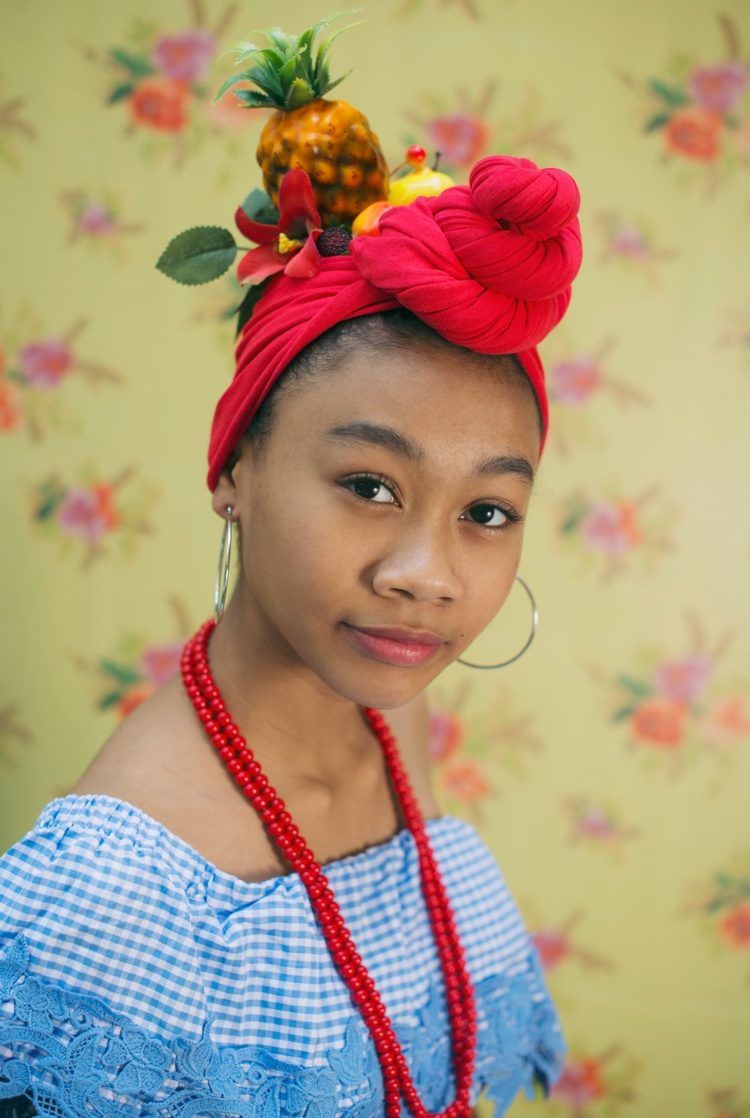
For The Barbershops project, I admired the barbers’ professionalism in creating designs on people’s heads; it’s like a sculpture! I found beauty. And it was fun to celebrate a predominantly male public culture that has been central to the development of a distinctive Brooklyn aesthetic. It was not only about the hairstyle they created, it was more about the vibe, the atmosphere. I was especially fascinated with the “tension” between barbers and clients when the barbers used scissors and blades that could be very dangerous weapons to hurt someone easily. At first, I was very nervous when they applied a blade onto small kids’ heads. But soon I realized that even the little ones know how to deal with it, they trust their barbers at such a young age. I thought it was amazing.
How different is your life in Brooklyn from your life in Kyoto?
Brooklyn is Big and all areas in Brooklyn have different characters. So first, I’m talking about NYC versus my hometown.
I grew up in the suburbs, in Kyoto Prefecture. I lived by the ocean and the mountains. New York City is a big city but we can easily take public transportation to get to the beaches or the mountains, and they aren’t that far from Brooklyn. I love a big city but I also need those two in my life; because nature always inspires, and heals me. That’s one of many reasons I’m living in NYC, because we have everything needed.
The biggest difference between my hometown and Brooklyn/New York City is “diversity”. We’re seeing different faces; hearing different languages, learning different cultures that are still fascinating to me. When I was growing up in my hometown, I rarely saw “foreigners”. I still remember the moment when I first encountered “foreigners” on the beach with my family. I was maybe 5 or 6-years-old. They came to us, started speaking in English, at least that’s what we believed back then. (It could easily have been Russian or any other language.)
In Japan, we study English for six years in middle and high school, but they don’t teach us “how to speak English”. So it’s hard to meet people who are bilingual (or multilingual) in Japan. Anyway, they told us we (my sister and I) were cute (that’s what we believed, haha) and they gave us tasty sandwiches. I still remember the flavors!
Another thing I love about being in NYC is that we are surrounded by arts in a very organic way. For example, yes there are museums, theaters, all the formal entertainment, and so on, but sometimes we don’t even need to go to these institutions. We have public arts all over the city, some are more official forms of public art but others are spontaneous, like urban mural and graffiti works.
Those are equally beautiful and important for NYC streets. We can listen to free professional “live” music on the streets, in the parks, or even in my backyard, here in Brooklyn. During the Covid-19 pandemic, some people moved out from NYC, to look for more space, more affordable space, for safe and beautiful environments, especially people who have children.
I think that totally makes sense but right now I haven’t considered it for my family. Especially because my daughter is biracial. we believe diversity is very important for her, and we want her to experience live arts in her daily life. I couldn’t find those when I was growing up in my town. And of my new projects, the one called Identity is focused on biracial subjects, starting with my daughter.
At some point, it gets very similar. I grew up playing with my neighbors and friends on the sidewalk, in the streets, and in our backyard. We knew everyone in the neighborhood. There was a community, and we protected each other. And the community is what makes my block in Bed-Stuy so special. We know many people on this block and we are friends with them. We have a lot of stories! For example, the day we moved into our apartment, we didn’t hire movers. When my husband opened the van, a young man was standing in front of the car, and offered us help. He was only 17-years-old. That’s how our first day of this neighborhood started.
On the next day, when I was coming back with my daughter after picking her up from school, kids came to ask if they could play with her on the sidewalk. So there I was, sitting on the stoop and watching. Then, some adults who were sitting outside told me to go home because they could watch her. I said, “Are you sure? I really don’t mind staying here.” They said, “Because your child is our child, we can watch her, so go home, do some stuff you need to get done.” The community raises kids, all adults pass on good tradition to their kids. This is our community, and the community is supposed to be like this.
You can support on this Kickstarter page.

